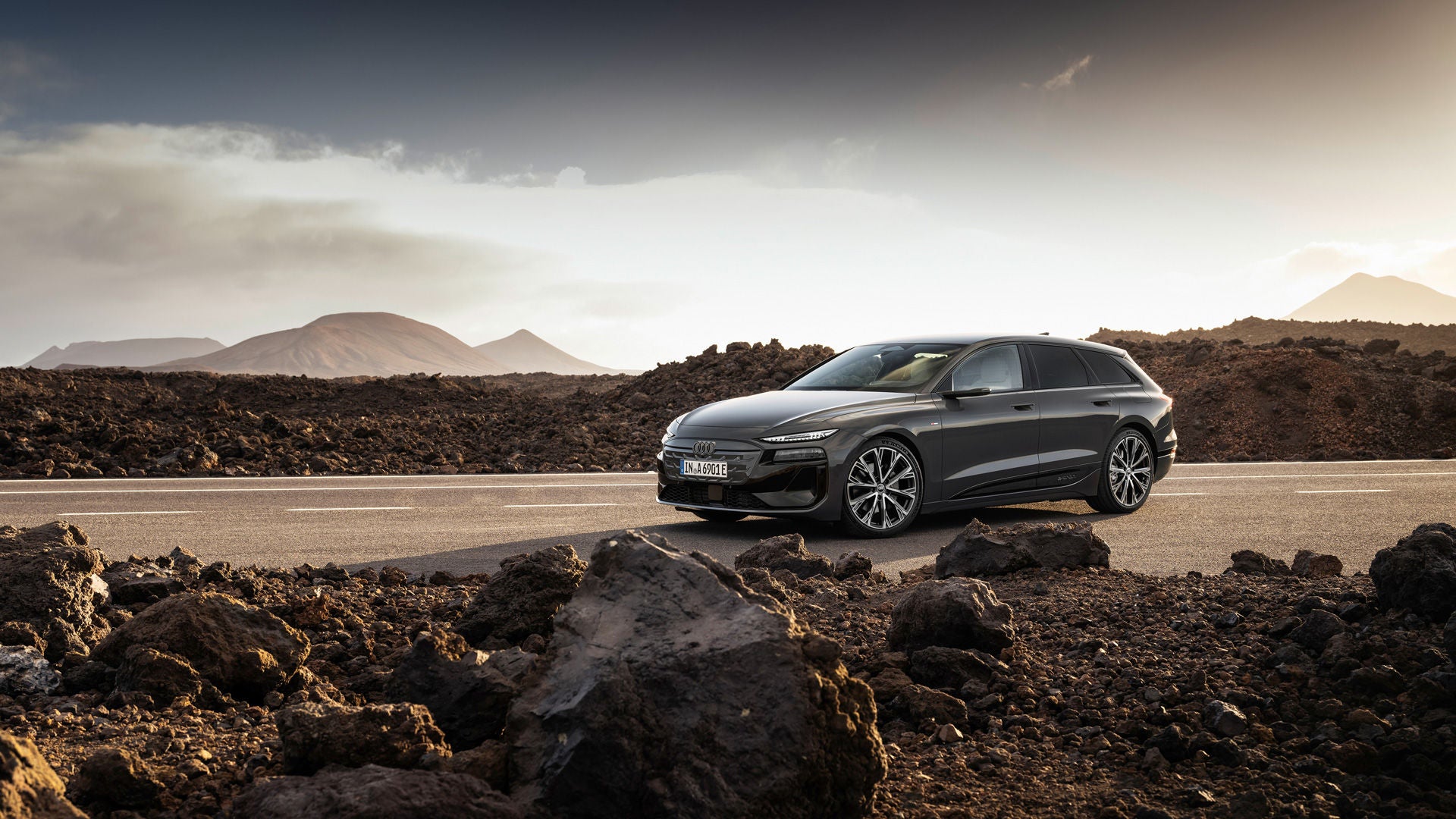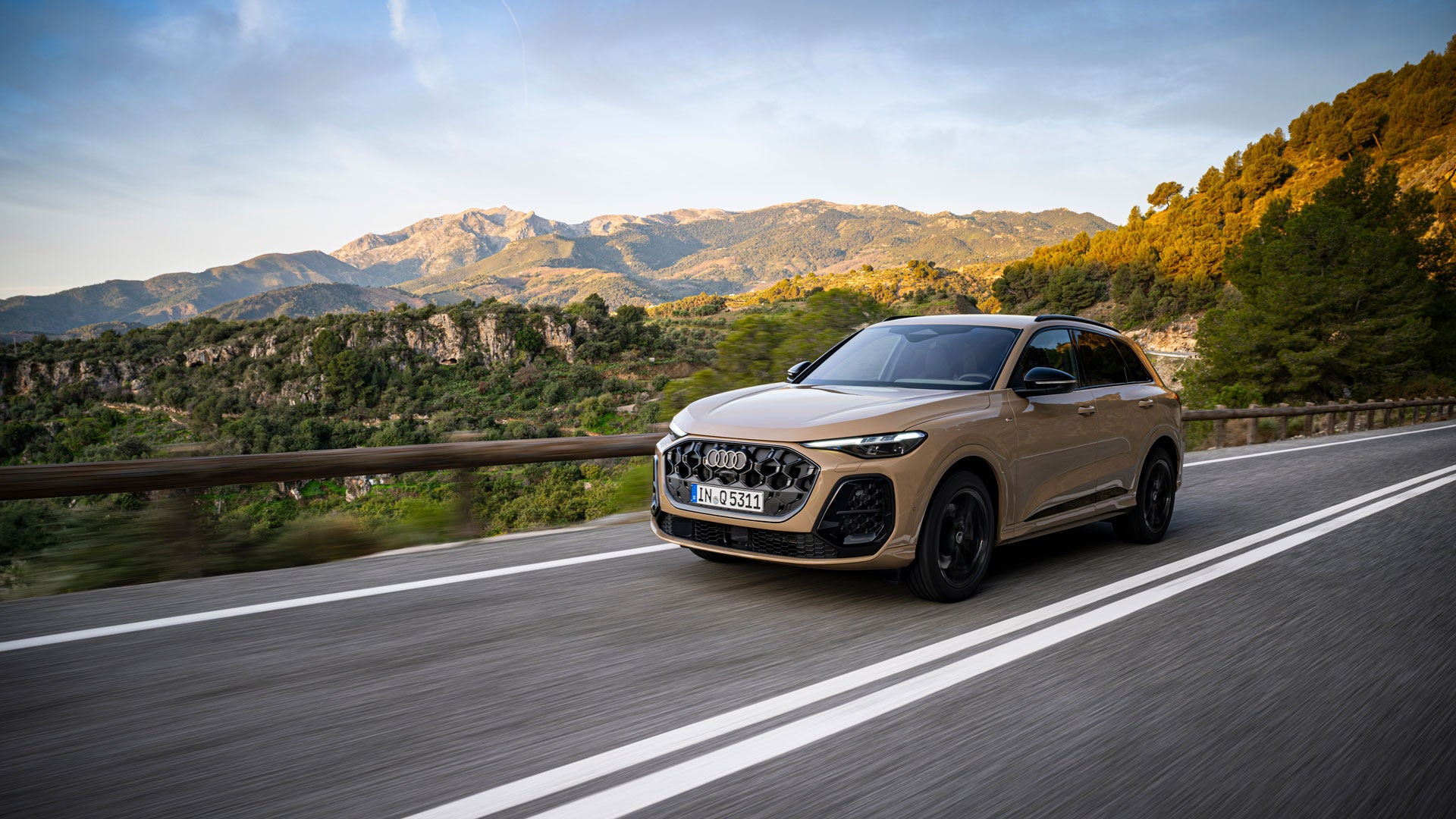It’s the inner values that count
missing translation: fa.article-intro.reading-time – 03/16/2023
Audi invests know-how, innovative technology and a great deal of passion to generate a brand-typical product experience for its customers. Besides the exterior, sound and driving behavior, it is above all the design and functions of the interior that have a very decisive influence on this experience: it can be felt especially in the moment of silence that follows once the car door has closed, when the cockpit lights up and the driver’s hands feel the steering wheel.
The interior should be a place where drivers and passengers can feel at ease, while also being extremely functional. With its elegantly designed interiors focused on performance and innovation, Audi has proven for decades that both customers and the developers of the Four Rings have always attached particular importance to inner values, and will continue to do so. Now digitalization and sustainability are opening the door to new concepts and innovative solutions for customers.
Wild and loud: the beginnings of in-car entertainment
“The first car radios? They were around from the late 1920s. But we at Audi Tradition date the start of the era of in-car entertainment – with more than just a radio and a pair of speakers – to the early 1970s,” says Audi historian Ralf Friese. The main reason for this development was a new medium that competed with vinyl records: the music cassette. Ralf Friese: “Occupants were now able to make their own playlists.”
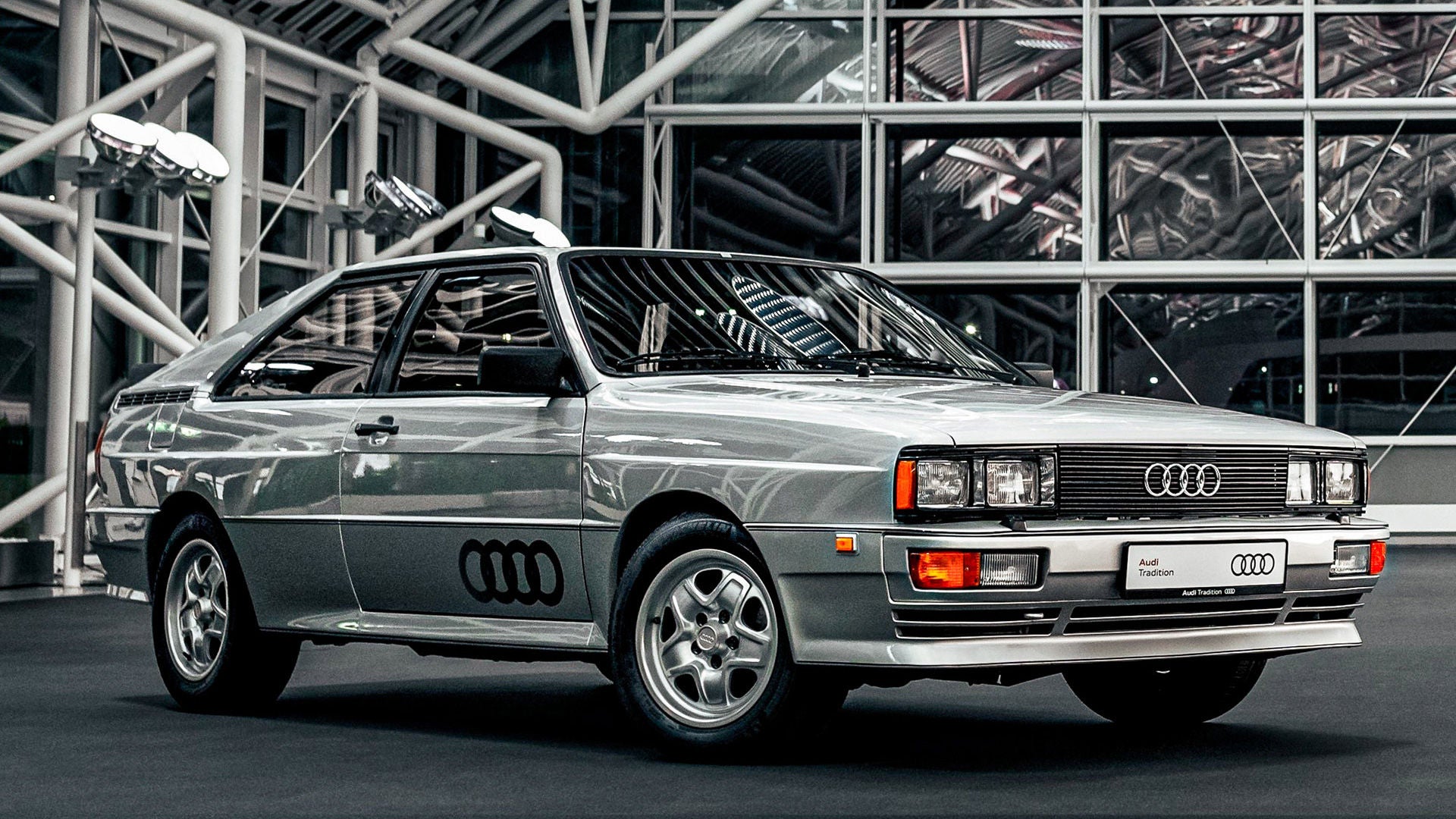
Audi Urquattro*: It left its mark on the 1980s with its spectacular design.
“The beginnings of in-car entertainment go back such a long way that some of the audio carriers and players have almost disappeared by now.“
Ralf Friese, Audi historian, Audi Tradition
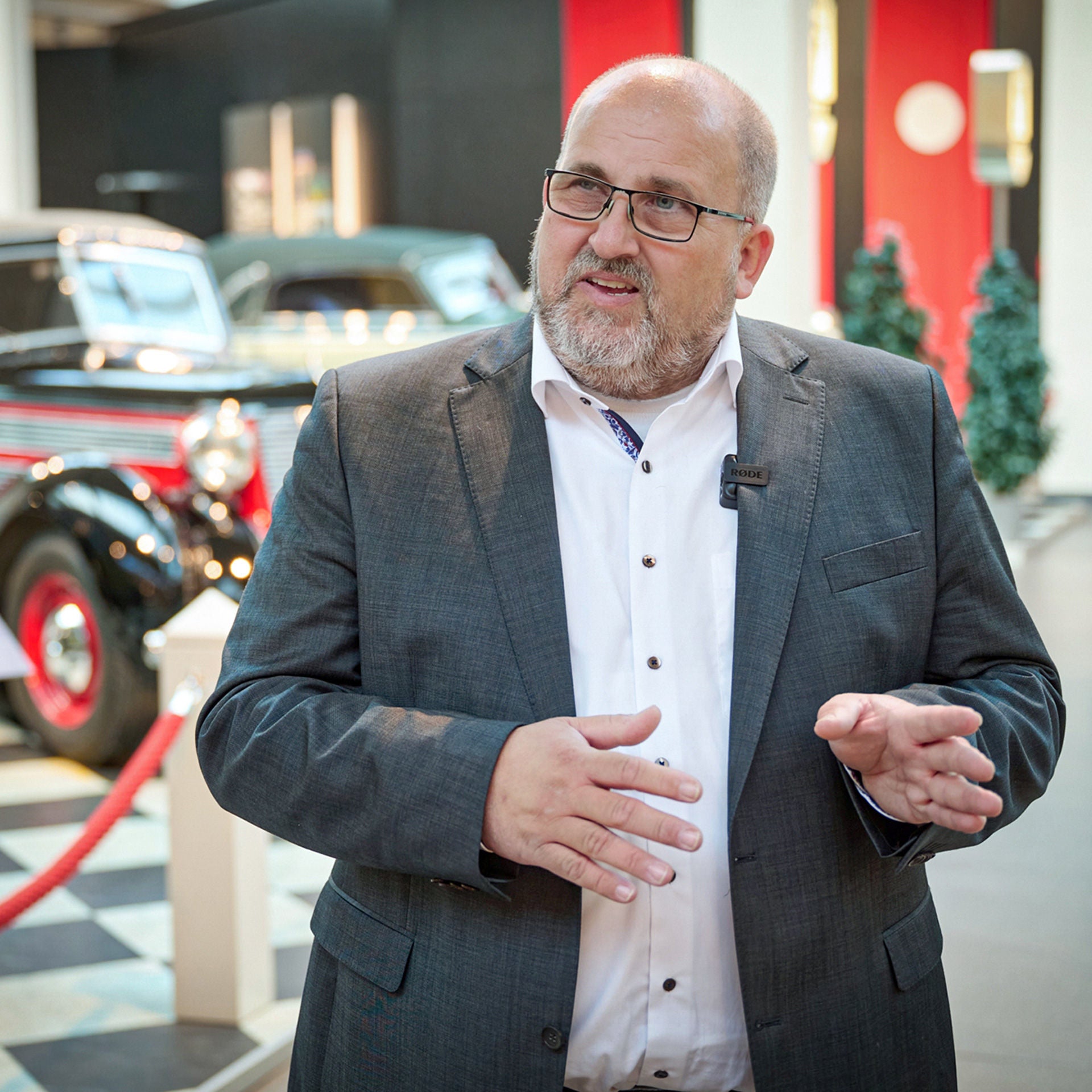
Ralf Friese, Audi historian, Audi Tradition
As early as 1973, you could listen to your music on cassette tapes in an Audi – one example being the Audi 100 LS C1*. But only if you ordered the ‘Neckarsulm’ cassette radio.” This optional extra turned the dashboard, with its centrally installed speaker, into a soundstage for the top hits of the year.
Entertainment has been a megatrend in the automotive industry ever since. In 1990, the first CD players became available for the Audi V8 D1* under the name “Audi Gamma CD.” From 1998, it was even possible to watch TV in the Audi V8 D2* – at least when the car was parked. The technical prerequisite for this was the “navigation system plus,” which could even receive teletext.
My car is talking to me!
The Audi quattro* from 1983 is considered something of a legend. Obviously because of its driving performance, but also because of its spectacular digital cockpit displays. But on top of that, it could do something that only the futuristic vehicle in TV series could do at the time: talk. Its on-board computer spoke to the driver. Not in a computer-generated voice, but in the voice of a radio presenter: its repertoire of announcements comprised 15 sentences.
What’s more, the on-board computer in the Audi quattro* could do math: it continuously kept track of the time, the amount of gasoline consumed, the distance traveled as well as tank capacity and calculated the remaining fuel supply in liters. “The device marked a small but nevertheless important turning point because, in addition to entertainment, the Audi quattro now offered practical functions: the display of vehicle data, then later the integration of telephones, and finally navigation,” says historian Ralf Friese, explaining the interior design milestone set by the Audi quattro*. Audi’s aspiration at the time was to offer its customers sophisticated innovations, and the same is true today.
Safer on the road – thanks to digital features
The augmented reality head-up display in the Audi Q4 e‑tron family is designed for safety and comfort. Augmented reality (AR) means that the real world, the viewer’s visual perception, is supplemented by digital elements. The AR head-up display from Audi displays important information on the windshield in the driver’s field of vision. The information provided by selected assist systems and the turning arrows of the navigation system are visually superimposed in the corresponding place on the real-life outside world and displayed dynamically. They float virtually at a distance of about ten meters in front of the driver. The displays can thus be read in a flash and increase both driving comfort and safety, making them extremely helpful, especially in poor visibility conditions.

Convenience and safety thanks to augmented reality: head-up display in a model of the Audi Q4 e-tron family.
New functions through connectivity
Audi is fully focused on connecting the vehicle with its environment (car-to-x services). In many new models, more than 10 invisibly integrated antennas transmit and receive audio, LTE, Bluetooth and GPS signals, enabling Audi to offer new services and functions.
For example, drivers can be advised of the nearest available parking space in the city center (on-street parking via Audi connect) or the nearest available charging station (Audi e-tron route service) or receive early warnings of dangers such as black ice (hazard alerts), since the vehicle can use the Audi fleet’s swarm intelligence.
The increasing digitalization of the model series also makes the service “functions on demand” possible, giving customers the chance to add selected optional extras in the areas of driver assistance, lighting or infotainment retrospectively and thus to respond flexibly to changing needs. In this way, they can upgrade the LED headlights to matrix LED headlights with intelligent high-beam control, for example. Among the assist systems that can be added is park assist, while the infotainment package includes the Audi smartphone interface.
The Audi smartphone interface ensures excellent and stable connectivity between cell phone and vehicle. The interface establishes a wireless connection to customers’ iOS and Android cell phones and places their Apple Car Play or Android Auto environment on the MMI display. Customers can then navigate the content conveniently via the vehicle’s controls. While the Audi smartphone interface allows the cell phone to be seamlessly integrated into the Audi infotainment system, the myAudi app turns the cell phone and car into a single unit on the smartphone. The myAudi app bundles the various Audi connect services.
More digitalization thanks to innovative platforms
With their platform strategy, the Volkswagen Group and the Progressive brand group are leveraging maximum synergies and thus reducing their development costs.The launch of the Premium Platform Electric (PPE) is the next important step for Audi – both in the area of fully electric drive technology and digitalization.
With the new E³ electronics architecture, which is being developed jointly with CARIAD, the PPE will bring a comprehensive digital premium experience to series production. The architecture places an even stronger focus on the digital needs of customers: by connecting to the Volkswagen Automotive Cloud for over-the-air updates so that the vehicle’s software is always up to date. By providing improved connectivity based on the 5G mobile communications standard for safety features (e.g., assisted driving, faster hazard warnings) and more efficient and relaxed driving (e.g., traffic light information). And by offering optimized performance, improved navigation functions and new UX/UI*.
A space beyond your dreams
Looking into the future: in its concept cars, Audi breaks entirely with conventions that have been in place for decades. The space that surrounds passengers is being redefined: for one thing, electric mobility enables a previously unseen division of space due to the different drive components. For another, increasingly automated driving functions* mean that the interior can be used more and more as a living and experiential space.
Our developers have designed the Audi urbansphere concept* especially for megacities, for example. The concept car offers an extremely large interior with four individual seats in two rows: when conversing, passengers can turn to face each other on their swiveling armchairs. Meanwhile, anyone who wants some privacy can cover their head area with a screen mounted behind the head restraint. To share infotainment content – or participate in a video call – passengers can use a large-format OLED screen that swivels from the headlining into the space between the rows of seats. The Audi urbansphere concept* is thus equally suitable for use as a luxurious rolling lounge* offering first-class comfort and as a mobile office.
In the interiors of the concept cars, new digital features come into their own. Anyone looking around the Audi grandsphere concept*, for example, will discover neither dial instruments nor screens. Only when the vehicle comes to life at a simple touch of the finger do the controls integrated into the surfaces reveal themselves. They are not physically tangible, as they are projections on the surfaces below the windshield. All the information required is displayed there in ultra-fine resolution.
And in the Audi activesphere concept*, which celebrated its world premiere in January 2023, “Audi dimensions” creates a unique experience. At the heart of this new system are innovative mixed-reality headsets – available individually for all occupants at their seat in the car. It is an innovative operating concept that combines the physical and virtual worlds (mixed reality). The high-tech headset* that is individually configurable for all passengers provides a view of the real environment, while simultaneously displaying 3D content and interactive elements in the field of vision. All data relevant to the driver – such as driving conditions and navigation – can thus be superimposed. The most important technical innovation in the Audi activesphere concept* is the adaptation of augmented reality (AR) for mobility. “Audi dimensions” creates the perfect synthesis of actual surroundings and digital reality.
The Audi “sphere” concept cars show the Four Rings’ vision of sustainable premium mobility. Common to all vehicles is not only the electric drive, but also a consistent focus on the capability for automated driving. This technical layout gives rise to completely new designs, especially when it comes to interiors and opportunities for the people on board – they can use their time productively or simply enjoy the journey.
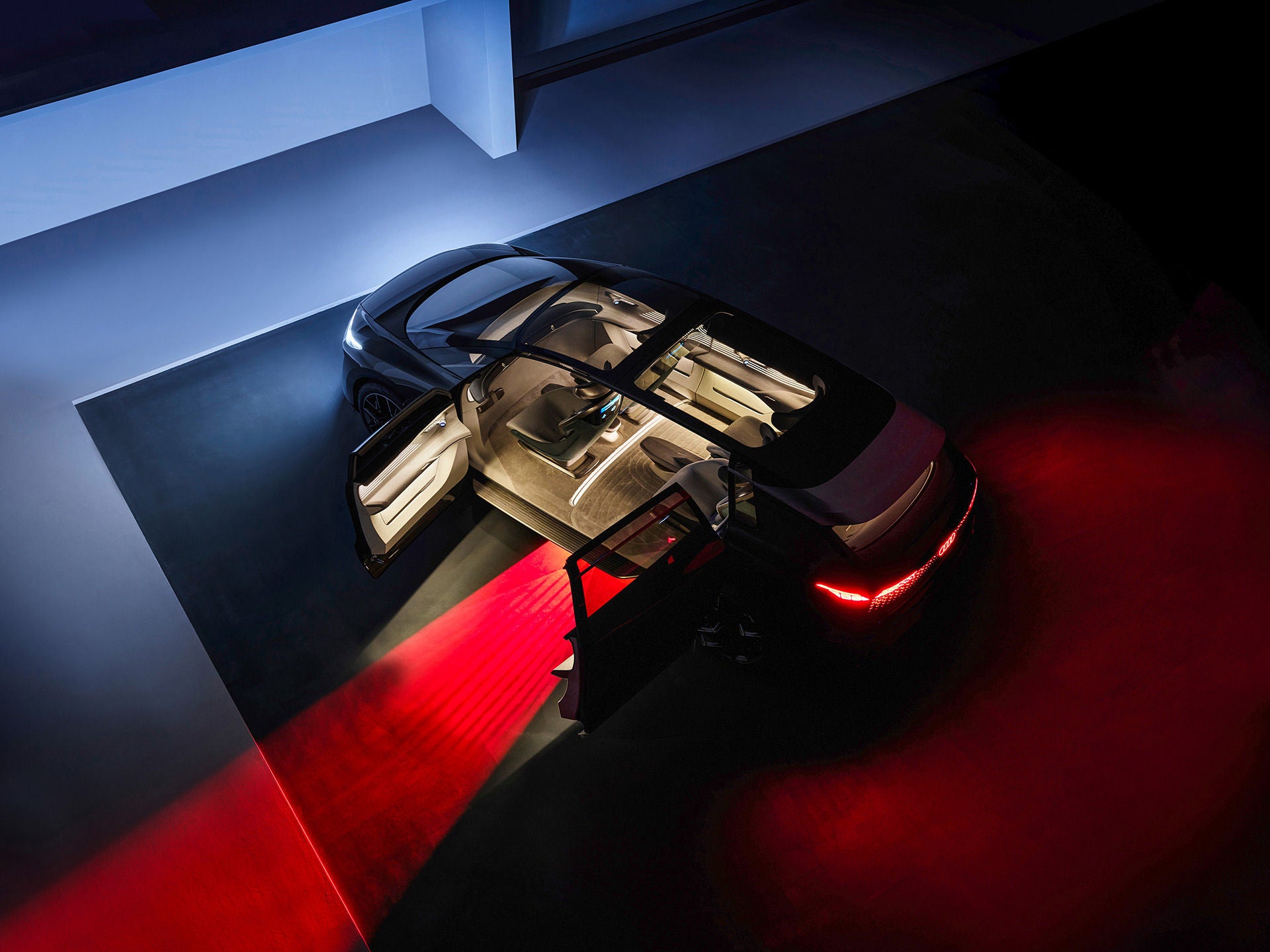
Interior with first-class comfort: Audi urbansphere concept⁵
Tradition at Audi: innovations for sustainability
If you think sustainability is a topic that has only played a role for a few years, you are mistaken. For the interior, sustainability has been gaining increasing importance at Audi since the 1990s. “That’s when we first used biological insulating material for the door panels in selected models,” says Ralf Friese, who works at Audi Tradition. “And in some cases, we were already using naturally tanned leather as well.”
Today, the demands on sustainability have risen significantly at Audi. Resource conservation, for example through recycling, plays an ever-increasing role. In some parts of selected vehicles, Audi therefore uses recyclates, i.e., reprocessed materials that come from a recycling process. The goal is not just to reduce carbon emissions, but to make cost-effective and efficient use of materials. And Audi plans to continuously increase the proportion of recycled materials in its models.
In the models of the Audi Q4 e‑tron family, more than two dozen parts already contain recycled materials. For the Audi Q8 e‑tron, the company will not only offer optional interior features such as seat upholstery made of recycled PET bottles, old textiles or fiber scraps; for the first time, there will also be safety-relevant parts that are made partly of mixed plastic waste: the plastic covers of the seat belt buckles.
Many of the materials in the latest Audi concept cars are produced using sustainable or recycled raw materials. For example, the seat cushions in the Audi urbansphere concept* are made of a recycled polyamide (Econyl). The armrests and the rear area of the vehicle contain bamboo viscose. Bamboo grows faster than ordinary wood, binds a lot of carbon dioxide and neither herbicides nor pesticides are needed in its cultivation. This is in keeping with a progressive understanding of premium quality, which invariably also includes sustainability.

